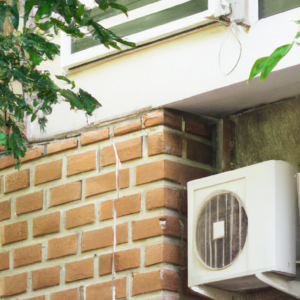 The benefit of thermal mass and thermal inertia in a house that uses a solar hybrid air conditioner is that it allows the house to store and release heat energy slowly over time, reducing the amount of energy needed to cool the house and making the air conditioning system more efficient.
The benefit of thermal mass and thermal inertia in a house that uses a solar hybrid air conditioner is that it allows the house to store and release heat energy slowly over time, reducing the amount of energy needed to cool the house and making the air conditioning system more efficient.
Thermal mass refers to the ability of certain materials, such as concrete, bricks, or tiles, to absorb and store heat energy. When these materials are exposed to sunlight, they absorb the heat energy and store it within the material. This stored heat energy can then be released slowly over time, helping to cool the house during the evening or at night when temperatures are cooler.
Thermal inertia is the ability of a building’s structure to store heat energy and release it slowly over time. A house with high thermal mass and thermal inertia can maintain a comfortable temperature for longer periods of time, reducing the need for the air conditioner to work as hard to cool the house.
 When combined with a solar hybrid air conditioner, the thermal mass and thermal inertia in the house can be utilized to reduce energy consumption and costs. The solar panels on the system generate electricity to power the compressor, and the thermal energy stored in the building’s structure is used to preheat the refrigerant before it enters the compressor. This reduces the amount of electricity needed from the grid to cool the house, making the air conditioning system more efficient and cost-effective.
When combined with a solar hybrid air conditioner, the thermal mass and thermal inertia in the house can be utilized to reduce energy consumption and costs. The solar panels on the system generate electricity to power the compressor, and the thermal energy stored in the building’s structure is used to preheat the refrigerant before it enters the compressor. This reduces the amount of electricity needed from the grid to cool the house, making the air conditioning system more efficient and cost-effective.
In summary, the benefit of thermal mass and thermal inertia in a house that uses a solar hybrid air conditioner is that it allows the house to store and release heat energy slowly over time, reducing the amount of energy needed to cool the house, making the air conditioning system more efficient, and reducing energy consumption and costs.